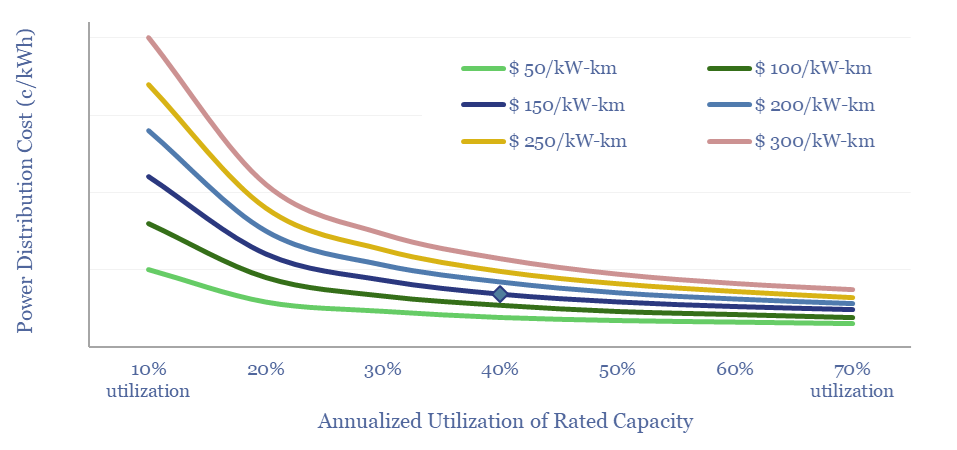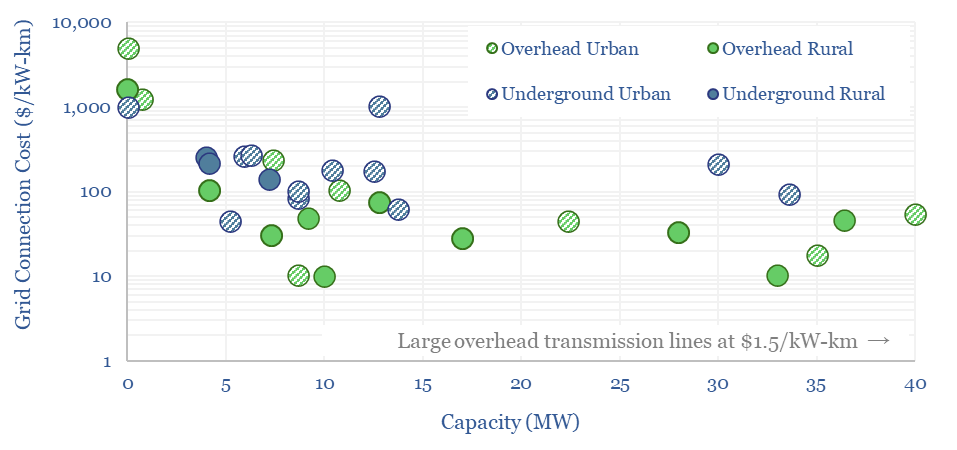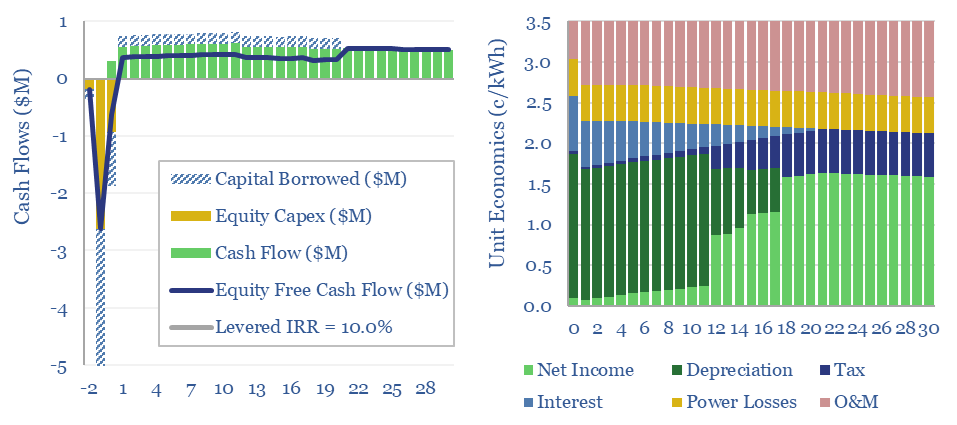Power distribution costs to residential, commercial and industrial consumers are estimated at 3.5 c/kWh in this model, to generate a 10% levered return, in a 5km x 10MW distribution line, at 17kV, rated up to 400A, with a $150/kW-km capex cost, a 5% line loss and 40% annualized utilization. All of these inputs can be stress-tested in the data-file.
Power grids move electricity from generation sources, through the high-voltage transmission network (120-500kV), stepping down via transformers to the medium voltage grid (35-120kV) and then finally through smaller distribution lines (4-35kV), before ultimately reaching residential, commercial and industrial customers.
This data-file aims to model the costs of power distribution, across projects that average 4-35kV voltages, 10MW (strictly MVA) of average capacities, and distances from 1-30km. Our base case estimate is for 3.5 c/kWh for distributing electricity to consumers.
Power distribution costs are highly sensitive to capex costs and utilization rates, as shown in the chart below. 40% annualized utilization is a good rule-of-thumb for a distribution line that is at full capacity at the 1-2% peak load hours throughout the year. But capex is more complex.

One challenge is that no two projects are identical, which is borne out by reviewing different power cable configurations plus hundreds of planned projects in the capital improvement programmes of regional system operators. For example, MISO makes details available for all MISO transmission projects.
What is challenging is finding meaningful data-points, which represent the cost of adding new MVA-km to the distribution network. Most planning regions do not report the smaller expenditures separately (e.g., those costing <$1M, or <250k). Many projects also replace old equipment or improve reliability (e.g., transformers, circuit breakers, switchgear) but do not add any length to the network.
Nevertheless we have aimed to gather useful data-points in the projects tab (chart below). The range is very broad, from $10 to $5,000 /kW-km. As good average rules of thumb, large-scale overhead transmission lines cost $1.5/kW-km, rising to $30/kW-km for rural overhead distribution lines, $100/kW-km for urban distribution lines and $200/kW-km for underground distribution lines.

These costs matter for connecting new loads to the grid, such as electric vehicle charging points or other electricity-consuming facilities captured in our broader economic models. We also see potential to halve the levelized costs of T&D networks by using AI to optimize loads. Please download the data-file to stress test the costs of electricity distribution.
